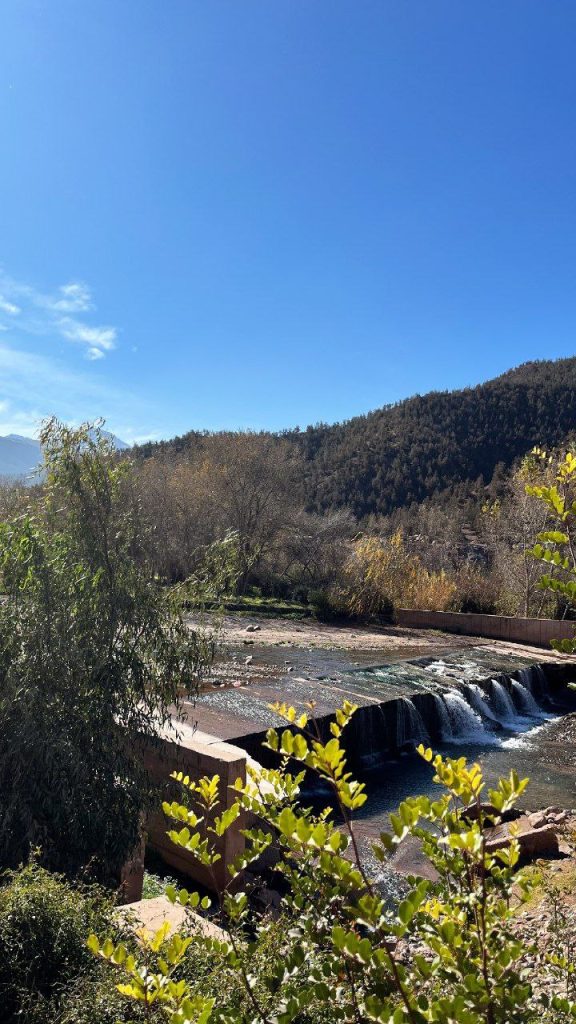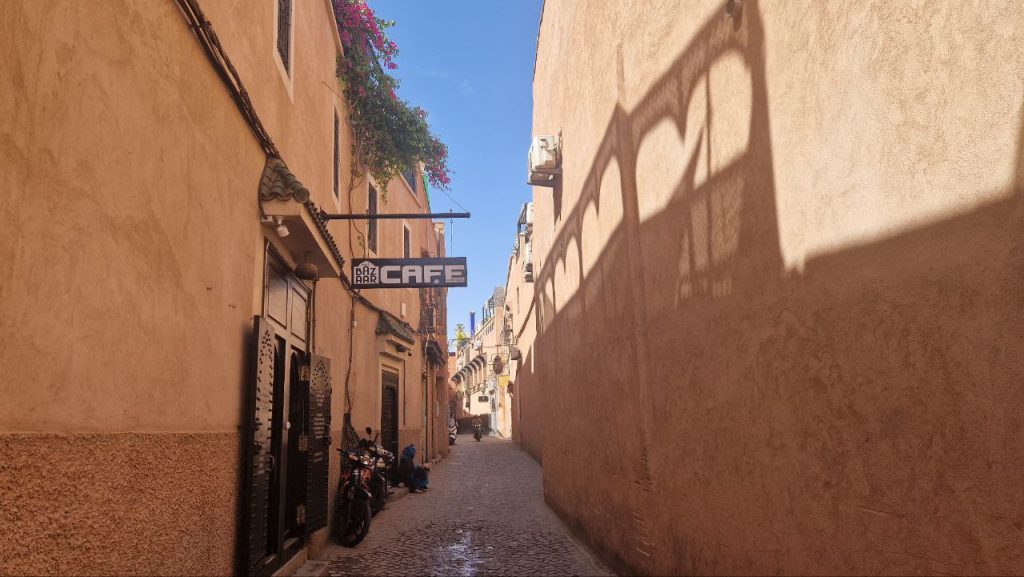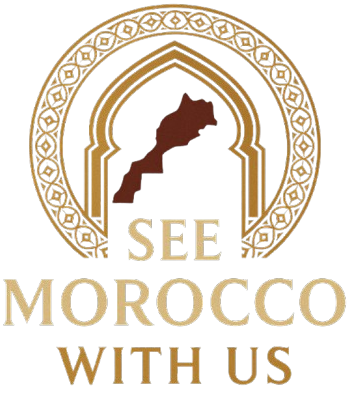what is morocco known for? 10 fascinating things that make it unique
What is Morocco known for? This North African gem welcomes over 12 million tourists every year, making it one of the top destinations in Africa. Morocco is known for its stunning diversity—from vibrant souks and ancient medinas to sweeping deserts and majestic mountains. It’s a country full of experiences that will amaze you and leave you eager to explore more.
Exploring Morocco, you’ll find a place where old traditions meet modern life. Marrakech’s busy medinas and the calm Sahara Desert are just the start. Morocco is full of landscapes, rich history, and exciting adventures.
Every part of Morocco has its own story. You’ll see Berber traditions, Islamic buildings, French touches, and local cultures. It’s a mix that creates unforgettable experiences, unlike anywhere else.
Are you ready to discover what makes Morocco special? It’s a place where travelers find real, life-changing experiences. Your journey through Morocco starts today!
Exploring Morocco’s Rich Cultural Heritage and Traditions
Morocco is a vibrant mix of cultures, where traditions come alive in every corner. The richness of Moroccan culture and traditions is seen in detailed ceremonies, warm hospitality, and customs passed down through generations.
Moroccan festivals and celebrations are key in connecting people and keeping cultural identity alive. These events highlight the country’s rich social fabric, bringing communities together in joy and meaning.
Traditional Moroccan Ceremonies
Ceremonies in Morocco are deeply meaningful, marking important life moments. Key celebrations include:
- Wedding celebrations lasting multiple days
- Religious festivals like Eid al-Fitr
- Coming-of-age rituals
- Harvest and agricultural commemorations
The Art of Moroccan Hospitality
Moroccan hospitality is a key part of social life. Guests are treated with great respect and warmth. Traditional mint tea ceremonies are a symbol of welcome and friendship, inviting visitors to connect deeply.
Local Customs and Etiquette
Knowing local customs helps travelers interact respectfully. Important etiquette includes:
- Dress modestly, specially in rural areas
- Use right hand for eating and greeting
- Remove shoes when entering homes
- Learn basic Arabic or French phrases
By embracing these cultural nuances, you’ll make meaningful connections and understand Morocco’s unique social landscape better.
Mesmerizing Moroccan Architecture and Design
Exploring Morocco reveals a stunning architectural landscape. It tells stories of centuries of cultural innovation. Moroccan architecture is a blend of Islamic principles and local traditions.
The unique features of Moroccan architecture are truly captivating. Zellij tilework, a key part of Islamic architecture, turns buildings into stunning works of art. These geometric patterns show both mathematical precision and artistic skill.
- Ornate wooden screens (mashrabiya) that filter sunlight
- Elaborate carved plasterwork with detailed designs
- Courtyard-centered homes called riads
- Beautifully decorated mosque interiors
Islamic architectural influences are evident in Morocco’s iconic buildings. From grand mosques to cozy homes, each building has a story to tell. You’ll see how they focus on harmony, symmetry, and spiritual connection.
Traditional Moroccan architecture combines function and beauty. Thick walls keep places cool, courtyards offer privacy, and detailed decorations make spaces extraordinary.
What is Morocco Known For: Ancient Medinas and Vibrant Souks
Morocco’s markets, or souks, are a journey for the senses. They show the heart of Moroccan culture. These markets are key to why Morocco is loved by travelers looking for real experiences. Walking through these ancient places, you’ll see colors, craftsmanship, and old trading ways.
Famous Markets of Fez
Fez has some of the most famous markets in the world. Its medina, a UNESCO site, is a unique shopping spot. You’ll find narrow streets with artisan shops and old stores. The oldest leather tannery shows the city’s skill in craftsmanship.
- Explore centuries-old leather-making techniques
- Witness traditional dyeing processes
- Purchase authentic leather goods directly from craftsmen
Shopping in Marrakech’s Souks
Marrakech’s souks are full of traditional clothing and handmade items. Each area has its own craft, like textiles and metalwork. Bargaining is part of the fun, so get ready to chat with vendors.
Traditional Craftsmanship
Moroccan artisans keep old skills alive with their work. You’ll see amazing carpets, ceramics, and leather goods. These items tell stories of generations of makers.
- Handwoven Berber carpets
- Ceramic tiles with geometric designs
- Leather bags and accessories
Moroccan Cuisine: A Feast for the Senses
Moroccan food is a world of flavors and spices. It’s a journey through the country’s rich culinary traditions. Each dish tells a story of tradition and welcome.
The tagine is at the core of Moroccan cooking. It’s a slow-cooked stew made in a clay pot. The dish combines tender meats with spices like cumin, saffron, and cinnamon.
- Tagine: A signature slow-cooked stew with complex flavors
- Couscous: Weekly traditional dish served with vegetables and meat
- Pastilla: Sweet and savory meat pie with delicate phyllo pastry
Street food in Morocco is a treat. You’ll find harira soup, grilled kebabs, and khobz bread. Each bite is a mix of Berber, Arab, and Mediterranean flavors.
Dining in Morocco is about sharing. It’s a time to connect and celebrate. Food brings people together, showing the warmth of Moroccan hospitality.
The Majestic Sahara Desert Experience
Imagine walking into a world of endless golden sands and stunning landscapes. The Sahara Desert in Morocco is a unique adventure that turns regular trips into unforgettable memories. It’s a top spot for tourists, with its vast desert and rich culture.
Visiting the Sahara Desert in Morocco needs careful planning and a sense of adventure. There are many ways to see the desert’s beauty and diversity.
Desert Camping Adventures
Your desert adventure starts with special overnight stays. These desert camps offer comfy places to stay among amazing sand dunes. You can:
- Sleep under the starry desert sky
- Stay in traditional Berber-style tents
- Enjoy genuine desert hospitality
- See incredible sunrise and sunset views
Camel Trekking Tours
Camel trekking is the best way to see the Sahara’s vast lands. Expert guides take you through beautiful scenes, teaching you about the desert’s life and culture.
Berber Cultural Encounters
The Sahara is more than just a landscape; it’s a living museum of culture. Berber communities welcome you, sharing their traditions and connecting you to this amazing place. You’ll learn about nomadic life, crafts, and survival skills passed down through generations.
Atlas Mountains: Natural Wonder and Berber Villages

The Atlas Mountains stretch across Morocco, showing the heart of Moroccan culture. These mountains separate the Mediterranean and Atlantic coastlines from the Sahara Desert. They offer stunning landscapes and unique cultural experiences.
Indigenous Berber communities live in the Atlas Mountains. They have kept their traditional way of life for centuries. You’ll find vibrant villages with ancient customs and warm hospitality.
- Explore dramatic mountain landscapes with elevations reaching over 4,000 meters
- Encounter traditional Berber villages with mud-brick houses
- Experience remarkable hiking and trekking opportunities
- Witness unique wildlife and diverse ecological zones
Hiking enthusiasts will love the Atlas Mountains. The High Atlas and Middle Atlas ranges offer different experiences. You can trek through cedar forests and visit remote villages.
The best times to visit are spring and autumn. Temperatures are mild, and landscapes are vibrant. The Atlas Mountains promise an unforgettable journey into North African wilderness.
Royal Cities and Historical Monuments
Morocco’s history is a stunning mix of architecture and culture. As you see the historical sites, you’ll learn about a long history of amazing civilizations. The cities to visit in Morocco take you on a journey through time, showing incredible Islamic architecture.
The imperial cities show Morocco’s rich past. Each city has its own story of culture and history:
- Fez: The oldest imperial city, with a medieval medina that’s a UNESCO World Heritage site
- Marrakech: Famous for its beautiful palaces and lively culture
- Meknes: Has impressive monuments from the Sultanate era
- Rabat: The current capital with amazing historical and architectural sites
Imperial Cities Heritage
Exploring Morocco’s imperial cities, you see amazing architecture that mixes design with history. The old medinas, with their narrow streets and ancient buildings, take you back in time to a world of architectural wonder.
Ancient Roman Ruins
The ancient Roman ruins of Volubilis give a peek into Morocco’s past before Islam. These sites show off detailed mosaics and buildings, telling of Roman times in North Africa.
Islamic Architecture
Islamic architecture in Morocco is a high point of art and culture. Places like the Hassan II Mosque in Casablanca and the madrasas of Fez show Morocco’s deep architectural heritage.
The Art of Moroccan Mint Tea and Coffee Culture

Exploring Moroccan culture, you’ll find nothing like Moroccan mint tea. It’s more than a drink; it’s a tradition that unites people. It shows the warmth of Moroccan social life.
Moroccan mint tea, also called “Moroccan whiskey,” is a mix of green tea, fresh mint, and lots of sugar. Making it is an art that needs skill and patience. Tea is poured high to create a frothy top and mix the flavors well.
- Green tea is the base of Moroccan mint tea
- Fresh mint leaves add a vibrant, refreshing taste
- Sugar makes the tea sweet and welcoming
The tea ceremony is key to Moroccan hospitality. When you visit a Moroccan home or shop, you’ll get tea as a sign of welcome. The ritual involves many pourings, each with its own meaning in Moroccan culture.
Moroccan coffee culture is also special. Strong, rich coffee is served in small cups. It gives a quick caffeine boost that goes well with the slow tea traditions.
Whether you’re having mint tea in Marrakech’s markets or a quiet cafe, it’s all about connection. It’s about talking, sharing, and being part of the community.
Conclusion
Morocco is more than just a place to visit. It’s a mix of old traditions and new life. You can see this in Marrakech’s busy souks and the calm Sahara Desert.
The country’s culture, landscapes, and people are unforgettable. You’ll love the tile work, spices, and Berber traditions. Morocco is loved for its history, beauty, and friendly people.
Exploring Morocco is like stepping into a world of history and beauty. You’ll see amazing buildings, try delicious food, and meet friendly locals. Morocco gives you memories that will stay with you forever.
Traveling in Morocco is an adventure that tells many stories. Bring your curiosity, respect for the culture, and an open heart. Morocco is waiting to show you a new way of seeing the world.
FAQ
What is the best time to visit Morocco?
Spring (March to May) and fall (September to November) are the best times to visit Morocco. The weather is mild and comfortable. It’s perfect for exploring cities, hiking, and enjoying outdoor activities.
Is Morocco safe for tourists?
Morocco is generally safe for tourists. Just be aware of your surroundings and protect your belongings. Most people find the locals very welcoming.
Do I need a visa to visit Morocco?
Many countries, including the US, don’t need a visa for up to 90 days. You’ll need a valid passport with at least six months left. Always check the latest visa rules before you go.
What language is spoken in Morocco?
Arabic and Berber are official languages, but French is common in business. English is also spoken in tourist areas, making it easy for visitors.
What currency is used in Morocco?
The Moroccan Dirham (MAD) is the official currency. Credit cards work in cities, but cash is better for small purchases. You can exchange money at banks, airports, and hotels.
What should I wear in Morocco?
Morocco is conservative, so dress modestly. Women should cover shoulders and knees. Light, loose clothes are best for the sun and respect.
What are the must-try foods in Morocco?
Try tagine, couscous, pastilla, and harira. Don’t miss Moroccan mint tea and street foods like msemen and harcha.
How do I get around in Morocco?
Morocco has trains, buses, and taxis. Trains connect big cities. Buses are cheap and go everywhere. Taxis are good for short trips.
What are the top destinations in Morocco?
Visit Marrakech, Fez, the Sahara Desert, Chefchaouen, and the Atlas Mountains. Essaouira and Casablanca are also great.
What cultural customs should I be aware of?
Moroccan culture values hospitality. Say “Salam Alaikum” when greeting. Ask before taking photos. Tipping is expected, and be respectful during Ramadan.



